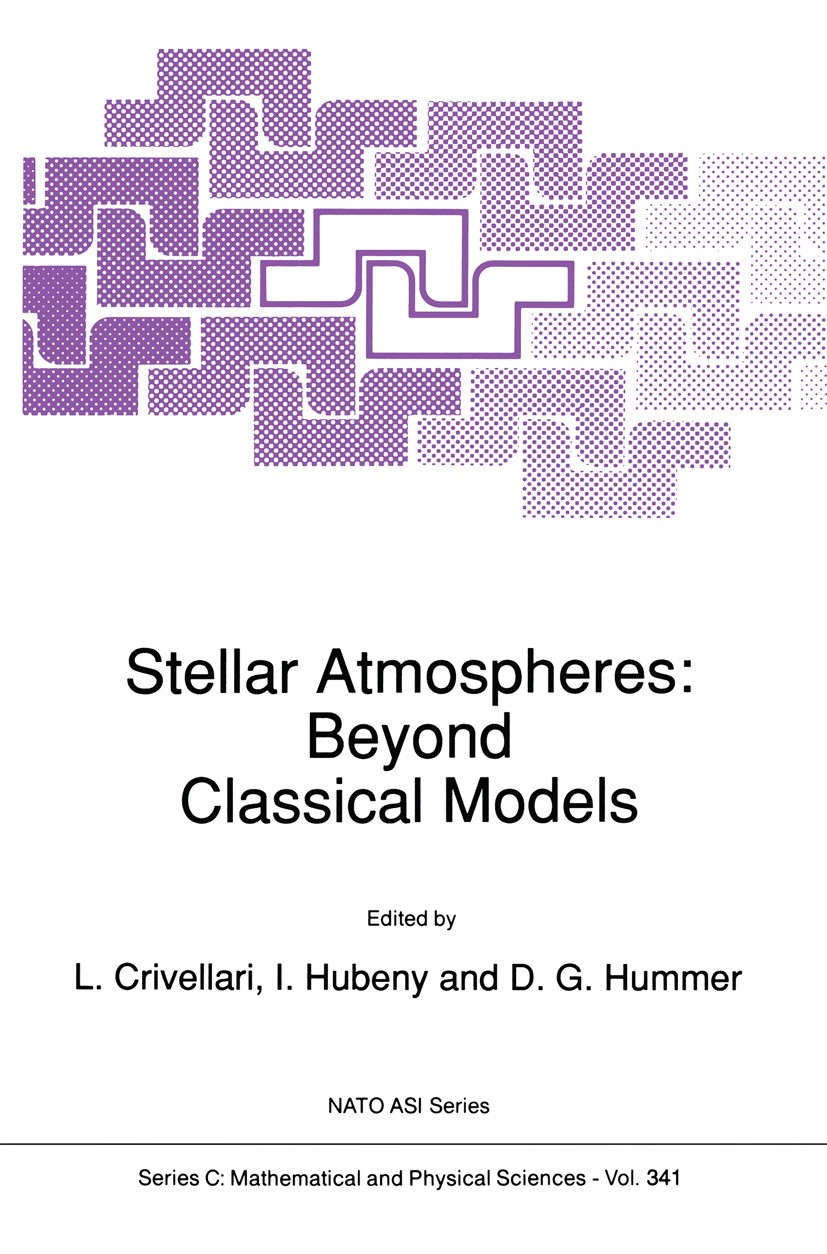| 书目名称 | Stellar Atmospheres: Beyond Classical Models | | 编辑 | L. Crivellari,I. Hubeny,D. G. Hummer | | 视频video | http://file.papertrans.cn/878/877148/877148.mp4 | | 丛书名称 | Nato Science Series C: | | 图书封面 |  | | 描述 | The theory of stellar atmospheres is one of the most important branches of modern astrophysics. It is first of all a major tool for understanding all aspects of stars. As the physical properties of their outer layers can now be found with high precision, firm conclusions can be drawn about the internal structure and evolution of stars. Moreover, improvements in our knowledge of the chemical composition of stars is shedding new light on the chemical evolution of galaxies and of the Universe as a whole. Because the outer layers of stars are among the best-understood astrophysical objects, the theory of stellar atmospheres plays an important role in the study of many other types of objects. These include planetary nebulae, H II regions, interstellar matter, and objects of interest in high-energy astrophysics, such as accretion disks (close binaries, dwarf novae, cataclysmic variables, quasars, active galactic nuclei), pulsar magnetospheres, and Seyfert galaxies. Finally, as stars provide a laboratory in which plasmas can be studied under more extreme conditions than on earth, the study of stellar atmospheres has strong connections with modern physics. Astronomical observations provide | | 出版日期 | Book 1991 | | 关键词 | Accretion; Galaxy; LOPES; Quasar; astrophysics; galaxies; interstellar matter; magnetosphere; neutron star; q | | 版次 | 1 | | doi | https://doi.org/10.1007/978-94-011-3554-2 | | isbn_softcover | 978-94-010-5574-1 | | isbn_ebook | 978-94-011-3554-2Series ISSN 1389-2185 | | issn_series | 1389-2185 | | copyright | Springer Science+Business Media Dordrecht 1991 |
The information of publication is updating

|
|
 |Archiver|手机版|小黑屋|
派博传思国际
( 京公网安备110108008328)
GMT+8, 2025-12-17 14:31
|Archiver|手机版|小黑屋|
派博传思国际
( 京公网安备110108008328)
GMT+8, 2025-12-17 14:31


